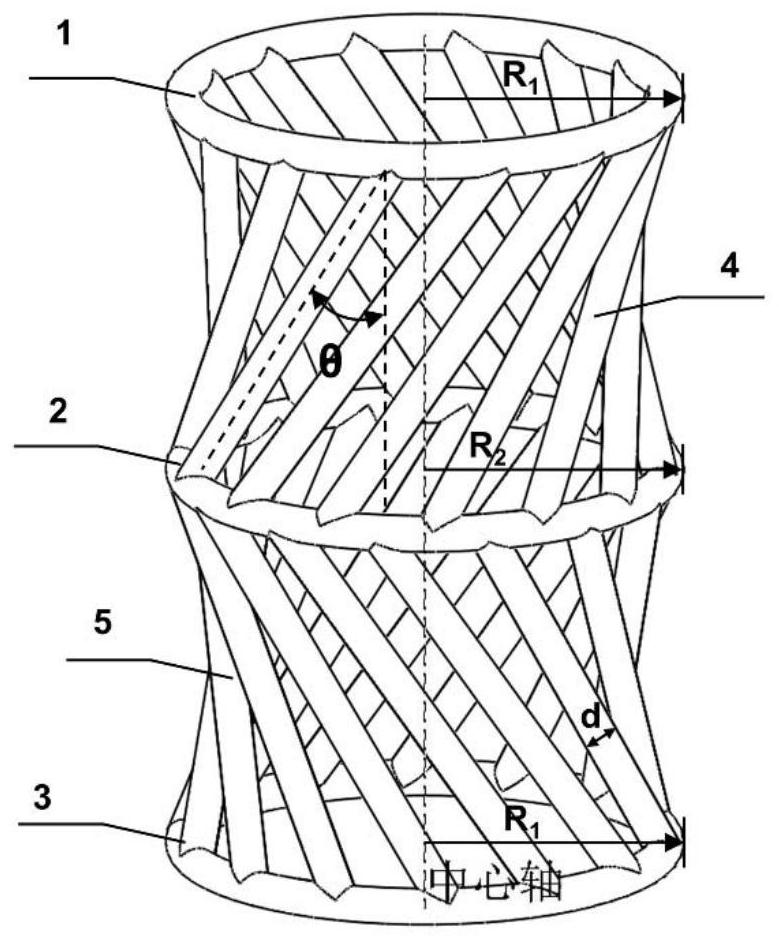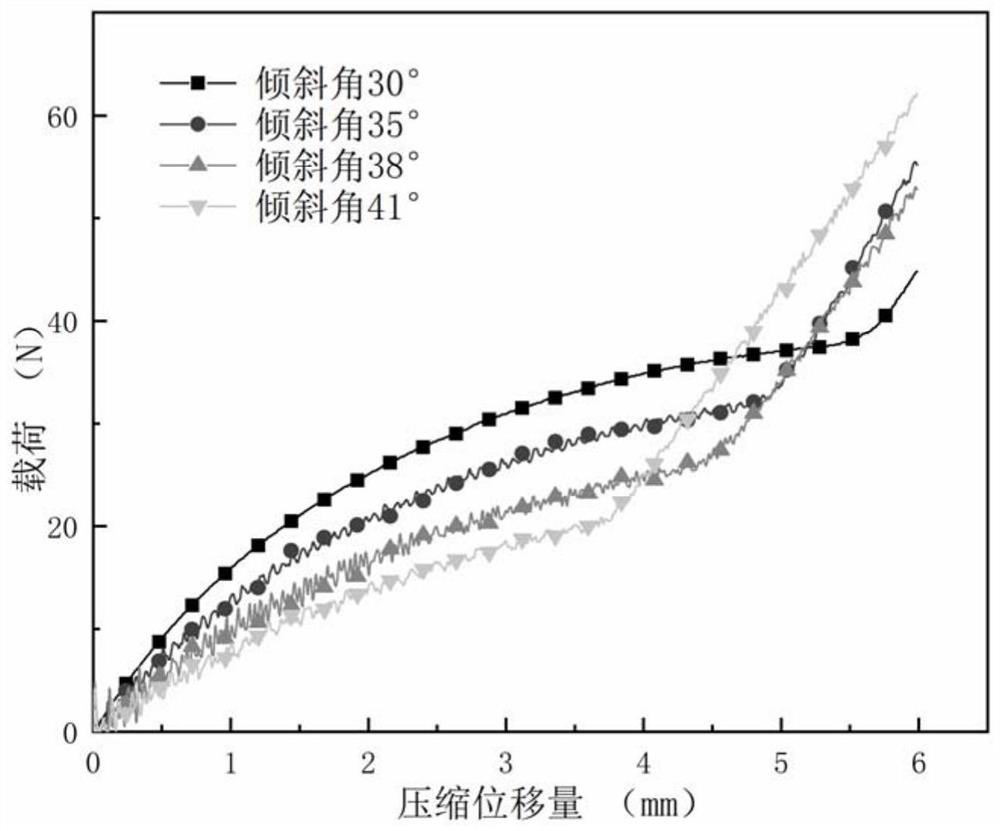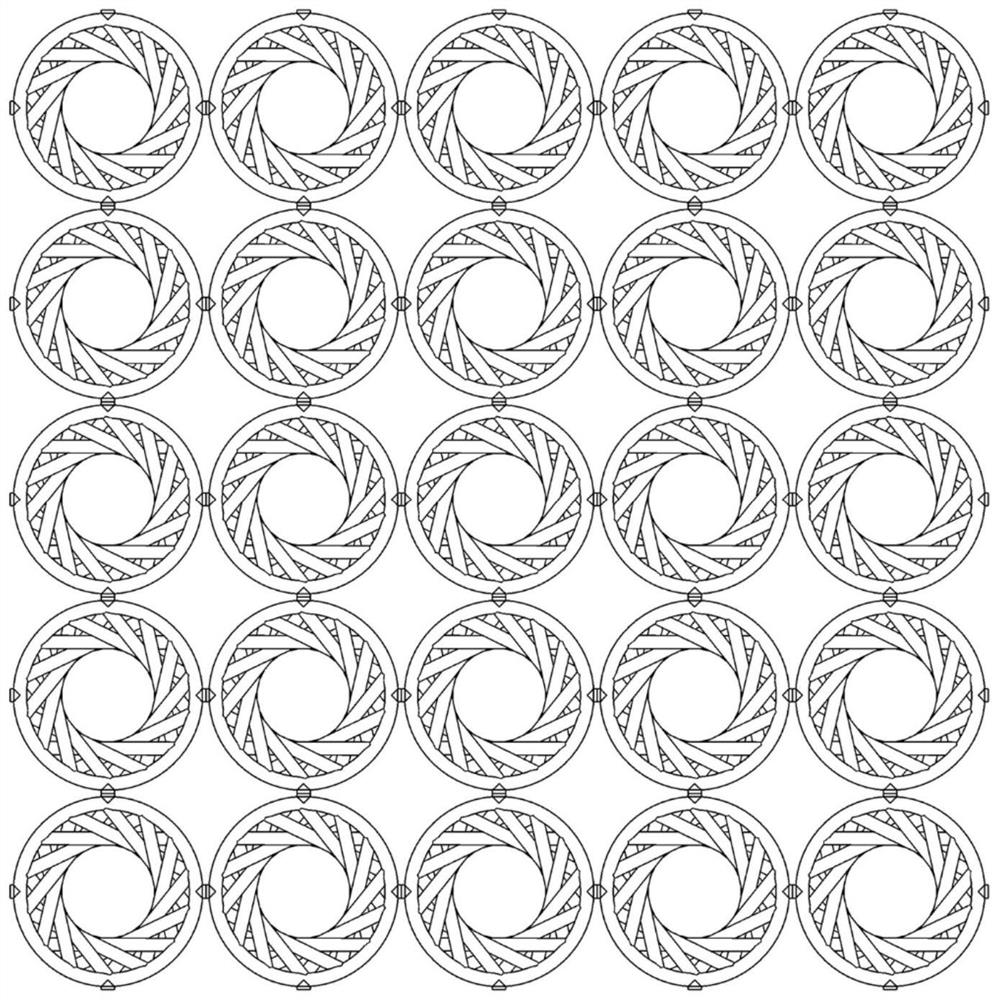Gradient lattice energy-absorbing structure based on chiral cells with programmable stiffness and its 3D printing method
An energy-absorbing structure and cell technology, applied in the field of chiral cells, can solve problems such as stress concentration, and achieve the effects of short processing time, simple processing method and good impact resistance.
- Summary
- Abstract
- Description
- Claims
- Application Information
AI Technical Summary
Problems solved by technology
Method used
Image
Examples
Embodiment 1
[0052] Such as figure 1 , 2 As shown, the chiral cell with programmable stiffness according to the present invention includes a cell structure, and the cell structure includes an upper ring 1, an upper connecting rod 4, a middle ring 2, a lower connecting rod 5, and a lower ring 3, wherein:
[0053] The upper ring and the lower ring have the same geometric shape. In the accompanying drawings, the upper ring and the lower ring are circular rings with a radius of R 1 . The middle ring can be in any shape, and is arranged between the upper ring and the lower ring, and the axes of the upper ring, middle ring, and lower ring coincide with the central axis of the cell structure.
[0054] The upper connecting rods have several pieces; the two ends of each upper connecting rod are respectively connected to the upper ring and the middle ring and are uniformly distributed between the upper ring and the middle ring in an oblique manner, and each upper connecting rod is relative to the ...
Embodiment 2
[0061] Such as Figure 4-6 As shown, a specific embodiment of the gradient lattice structure of the present invention is disclosed, which includes three layers of cell layers arranged in layers, and from top to bottom are the upper cell layer 6-1, the middle cell layer Layer 6-2 and lower cell layer 6-3. Or, the cell layer of the present invention has only two layers, or, the cell layer of the present invention has four layers, five layers... At this time, the rigidity of each cell layer arranged in stacks, from above Gradient change from bottom to top.
[0062] Each cell layer includes several cell structures with the same stiffness; for each cell structure in the same cell layer, the upper and lower rings of two adjacent cell structures are connected by beams , and the middle rings of two adjacent cell structures are arranged alternately.
[0063] When the cell layer is multi-layered, between two adjacent cell layers, the cell layer above is the upper cell layer, and the ...
Embodiment 3
[0076] The difference between this embodiment and Embodiment 2 lies in that the stiffness variation trend of each cell layer is realized in different ways. Specifically, in this embodiment, as Figure 7As shown, the diameters of the upper connecting rods and lower connecting rods of each cell structure on the same axis are set according to an increasing gradient from top to bottom, that is, the upper connecting rods / lower connecting rods of each cell structure in the upper cell layer The diameter of the connecting rod, the diameter of the upper connecting rod / lower connecting rod of each cell structure in the middle cell layer, and the diameter of the upper connecting rod / lower connecting rod of each cell structure in the lower cell layer are set in order from large to small; while in The included angle ϴ, included angle -ϴ, and inner diameter of the middle ring of each cell structure on the same axis are all corresponding to the same, so as to realize the gradient change of t...
PUM
| Property | Measurement | Unit |
|---|---|---|
| diameter | aaaaa | aaaaa |
Abstract
Description
Claims
Application Information
 Login to View More
Login to View More - R&D
- Intellectual Property
- Life Sciences
- Materials
- Tech Scout
- Unparalleled Data Quality
- Higher Quality Content
- 60% Fewer Hallucinations
Browse by: Latest US Patents, China's latest patents, Technical Efficacy Thesaurus, Application Domain, Technology Topic, Popular Technical Reports.
© 2025 PatSnap. All rights reserved.Legal|Privacy policy|Modern Slavery Act Transparency Statement|Sitemap|About US| Contact US: help@patsnap.com



